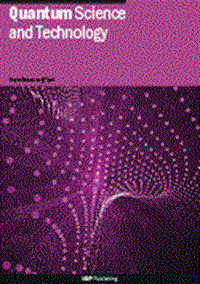温敏光力学系统中量子压缩引起的光非互易
IF 5.6
2区 物理与天体物理
Q1 PHYSICS, MULTIDISCIPLINARY
引用次数: 0
摘要
我们研究了x(2)微环光力学系统中单光子传输和光子相关的统计性质,其中光学非互易是由定向量子压缩引起的。由于在机械谐振腔中存在热声子,该系统对温度变化高度敏感。我们的数值模拟表明,当热声子从0到10变化时,单光子传输的隔离比从22.2 dB下降到1.1 dB(或从- 23 dB下降到- 3.3 dB)。此外,光子相关的统计性质从表现出强聚束效应转变为弱聚束效应。此外,参数放大元件增强了器件的温度响应,使其区别于其他类似的非互易器件。我们的协议提出了在超低温下精确测量温度的非互易装置的潜在应用,从而丰富了量子网络和量子信息处理。本文章由计算机程序翻译,如有差异,请以英文原文为准。
Optical nonreciprocity induced by quantum squeezing in temperature sensitive optomechanical systems
We investigate single-photon transmission and the statistical properties of photon correlations in
χ ( 2 ) microring optomechanical systems, where optical nonreciprocity is induced by directional quantum squeezing. Due to the presence of thermal phonons in the mechanical resonator, the system is highly sensitive to temperature changes. Our numerical simulations show that as the thermal phonons vary from 0 to 10, the isolation ratio of single-photon transmission decreases from 22.2 dB to 1.1 dB (or from −23 dB to −3.3 dB). Additionally, the statistical properties of photon correlations transition from exhibiting a strong bunching effect to a weak bunching effect. Moreover, the parametric amplification component enhances the device’s temperature response, distinguishing it from other similar nonreciprocal devices. Our protocol suggests a potential application for nonreciprocal setups in precise temperature measurement at ultralow temperatures, thereby enriching quantum networks and quantum information processing.
求助全文
通过发布文献求助,成功后即可免费获取论文全文。
去求助
来源期刊

Quantum Science and Technology
Materials Science-Materials Science (miscellaneous)
CiteScore
11.20
自引率
3.00%
发文量
133
期刊介绍:
Driven by advances in technology and experimental capability, the last decade has seen the emergence of quantum technology: a new praxis for controlling the quantum world. It is now possible to engineer complex, multi-component systems that merge the once distinct fields of quantum optics and condensed matter physics.
Quantum Science and Technology is a new multidisciplinary, electronic-only journal, devoted to publishing research of the highest quality and impact covering theoretical and experimental advances in the fundamental science and application of all quantum-enabled technologies.
 求助内容:
求助内容: 应助结果提醒方式:
应助结果提醒方式:


